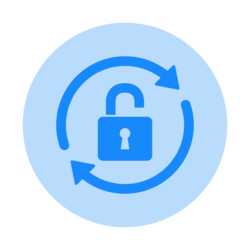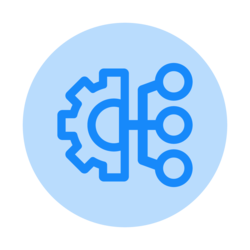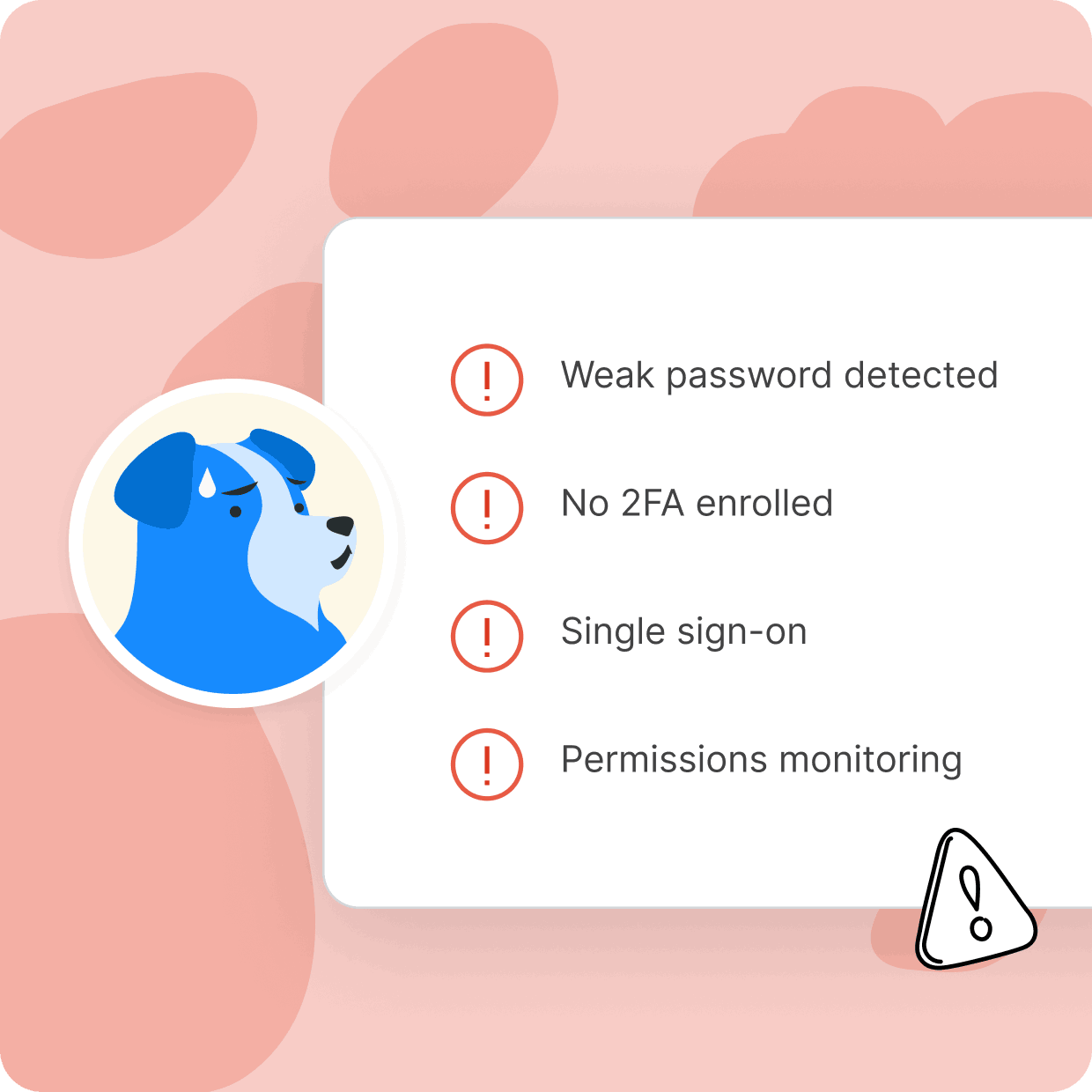SaaS security posture management is a systematic approach to managing security risks associated with SaaS applications. It’s designed to continuously monitor and enhance an organization's security posture across its SaaS environment.
Unfortunately, many applications don't support identity standards like the Security Assertion Markup Language (SAML) and the System for Cross-domain Identity Management (SCIM) specification. Without native support for these standards, applications either can't work with many PAM solutions or require expensive integrations.
Cerby allows you to manage all your SaaS administrator accounts, rotate credentials, and monitor and audit privileged account activities.
Secure Privileged Accounts
Not all accounts are created equal. Some come with administrative permissions that put sensitive data at risk when in the wrong hands. With Cerby, you can help protect your business from bad actors, mistakes, and data breaches.
With Cerby You Can

Secure your SaaS admin accounts

Protect your business from data breaches

Eliminate the costs of custom integrations
SaaS Security Posture Management
The rapid growth of cloud-based software solutions has revolutionized the way businesses operate. Software as a service (SaaS) is a prominent example of a solution in which software applications are provided over the internet, eliminating the need for on-premise installations. As organizations increasingly adopt SaaS applications, concerns over data security have arisen, leading to the emergence of SaaS security posture management (SSPM).
SaaS security posture management is a systematic approach to managing security risks associated with SaaS applications. It’s designed to continuously monitor and enhance an organization's security posture across its SaaS environment. SSPM helps companies maintain compliance with industry regulations, protect sensitive data, and gain visibility into the usage and configuration of their SaaS applications.
SSPM security tools aim to address the challenges faced by organizations utilizing SaaS applications. One concern is the difficulty in maintaining visibility and control. Unauthorized access and weak security policies can result in data breaches and non-compliance. In response to these concerns, SSPM security offers continuous monitoring, automated risk assessments, and remediation recommendations, enabling organizations to enhance their security posture.
According to the Ponemon Institute research, organizations are not able to reduce the cybersecurity risks caused by shared accounts. In the research, 50% of respondents say their organizations’ access management strategy enables employees to share login credentials securely when required by the application.
To better understand the SSPM meaning, it’s important to consider the core components of an SSPM solution. These components typically include:
- Continuous monitoring: SSPM solutions continuously monitor SaaS applications for configuration changes, unauthorized access, and potential threats. This real-time visibility helps organizations detect and respond to security incidents quickly and efficiently.
- Risk assessment: One of the great things about SSPM is that it assesses the security posture of an organization's SaaS environment by identifying misconfigurations, vulnerabilities, and other risks. They provide a risk score for each application so that businesses can prioritize their security efforts based on the level of risk they’re dealing with.
- Compliance management: These solutions help organizations maintain compliance with industry regulations by automating compliance assessments and providing actionable insights to address non-compliance issues. They also offer pre-built templates for common regulatory frameworks, streamlining the compliance process.
- Remediation recommendations: SSPM solutions provide recommendations to remediate identified risks and improve the overall security posture of an organization's SaaS environment. This may include guidance on configuration changes and addressing vulnerabilities.
- Reporting and analytics: Typically, SSPM tools offer comprehensive reporting and analytics capabilities. This allows organizations to track their security posture over time and measure the overall effectiveness of their efforts.
SSPM has become relevant in the current cloud landscape due to the growing reliance on SaaS applications and the inherent security risks associated with them. Organizations must ensure that their SaaS applications are configured and managed securely to prevent data breaches and non-compliance.
Cloud access security brokers (CASB) are another key element of this landscape. While both CASB and SSPM are designed to protect cloud-based environments, there are differences in their focus and capabilities. Understanding SSPM vs CASB is important when working with either. SSPM focuses primarily on the security posture of SaaS applications, whereas CASB covers a broader range of cloud services, including infrastructure as a service (IaaS) and platform as a service (PaaS).
As cloud adoption continues to rise, so does the significance of SSPM and related technologies in helping to address the challenges posed by SaaS. It has become more important than ever for organizations to proactively manage the security of their applications. By utilizing SSPM solutions, organizations can achieve a robust and secure SaaS environment, safeguarding their valuable data and infrastructure.
SSPM vs CSPM
SSPM, CASB, and cloud security posture management (CSPM) are three distinct yet complementary solutions that aim to secure cloud-based environments. SSPM centers around the security posture of SaaS applications. These solutions continuously monitor and assess SaaS environments, identify misconfigurations and potential security risks, and provide remediation recommendations. SSPM is key to protecting data and infrastructure.
CSPM, on the other hand, extends beyond SaaS applications, covering a broader range of cloud services that include IaaS and PaaS. CSPM solutions help organizations maintain visibility and enforce security policies across their entire cloud environment. They automate the discovery of cloud resources, as well as assess their security posture.
CASB solutions serve as intermediaries between users and cloud service providers, helping organizations monitor user activity, and protect sensitive data across multiple cloud services. CASBs offer a wide range of features, including access control, data loss prevention (DLP), threat protection, and user behavior analytics.
Similarities between SSPM, CSPM, and CASB include:
- A focus on cloud security: All three solutions are designed to address the unique security challenges associated with cloud environments. They help organizations maintain visibility and control over their cloud resources and protect sensitive data from potential threats.
- Continuous monitoring: SSPM, CSPM, and CASB solutions continuously monitor cloud environments for security risks. This makes it possible for organizations to spot and respond to security incidents in real-time.
- Compliance management: These solutions help businesses maintain compliance with industry regulations by automating compliance assessments and providing actionable insights to address non-compliance issues. They also offer pre-built templates for common regulatory frameworks.
- Remediation recommendations: SSPM, CSPM, and CASB provide recommendations to remediate identified risks and improve the overall security posture of an organization's cloud environment. This may include guidance on configuration changes, implementing security policies, and addressing vulnerabilities.
However, there are also some key differences between them to be aware of, such as:
- Scope: While SSPM focuses specifically on the security posture of SaaS applications, CSPM covers a broader range of cloud services, including IaaS and PaaS. CASB acts as an intermediary between users and cloud service providers.
- Primary function: SSPM and CSPM solutions are primarily built to identify misconfigurations and assess the security posture of cloud resources. By contrast, CASB solutions are more focused on securing access to cloud services and protecting data in transit and at rest.
- Implementation: SSPM and CSPM solutions typically require integration with an organization's cloud environment, while CASB solutions are deployed as a gateway between users and cloud service providers.
When comparing SSPM vs CSPM, it’s important to recognize that their primary difference lies in their scope. SSPM solutions focus exclusively on securing SaaS applications, while CSPM solutions encompass many more cloud services. One notable example of CSPM in action is cloud security posture management AWS solutions.
Despite their differences, both SSPM and CSPM are essential components of a comprehensive cloud security strategy. Organizations should ideally implement both solutions to secure their cloud environments fully.
SSPM Vendors
Choosing the right SSPM vendor is crucial to ensuring comprehensive protection for your organization's cloud infrastructure and data. Here are some of the factors to consider when evaluating SSPM vendors:
- Comprehensive coverage: The ideal SSPM vendor should offer support for a wide range of SaaS applications, including both popular and niche services. Evaluate vendors based on their ability to support your organization's specific applications. Noteworthy vendors and solutions in this space include SSPM Netskope, Adaptive Shield SSPM, Zscaler SSPM, SSPM AppOmni, and Palo Alto SSPM-supported apps.
- Integration capabilities: Your SSPM solution of choice should integrate seamlessly with your existing cloud infrastructure, including cloud security posture management vendors and other security tools. Solutions like Azure cloud security posture management and Microsoft cloud security posture management offer native integrations with their respective cloud platforms, simplifying the deployment and management of the SSPM solution.
- Real-time monitoring and alerting: Effective SSPM tools should provide continuous, real-time monitoring of your SaaS applications. This will enable your organization to detect and respond to security incidents quicker and more efficiently. Choose a vendor that offers real-time alerting and notification capabilities to make sure that your security team is always on top of potential threats.
- Risk assessment and prioritization: Good SSPM solutions offer comprehensive risk assessment capabilities, allowing users to identify, prioritize, and address potential security risks. Evaluate SSPM tools based on their ability to assess the security posture of your SaaS applications and offer actionable insights to remediate identified risks.
- Compliance management: Because organizations are subject to various industry regulations and data protection standards, your chosen SSPM vendor should offer robust compliance management features. Look for vendors that provide pre-built templates for common regulatory frameworks, automate compliance assessments, and generate actionable insights to address non-compliance issues.
- Remediation recommendations and automation: Whatever SSPM solution you pick should provide actionable remediation recommendations for identified risks and misconfigurations. Some tools also offer automation capabilities—in this way, they streamline the process of implementing recommended security measures and reducing the potential for human error.
- Reporting and analytics: Comprehensive reporting and analytics capabilities are critical for organizations to track their security posture over time and measure the effectiveness of their security efforts. Evaluate SSPM vendors based on their ability to offer customizable reports, dashboards, and analytics features that can provide valuable insights into your organization's SaaS security posture.
- Scalability and flexibility: A quality SSPM solution is scalable and flexible enough to grow with your organization as your cloud environment evolves. Look for vendors that offer flexible pricing models so that you can scale your SSPM solution as needed without incurring unnecessary costs.
- Vendor reputation and support: The reputation and track records of cloud security posture management vendors are important to consider when making a selection. Research customer reviews and testimonials to gauge the quality of the vendor's products and customer support.
- Ease of use and deployment: The ideal SSPM solution should be easy to deploy, configure, and manage, minimizing the burden on your organization's IT and security teams. Look for vendors that offer intuitive user interfaces and streamlined deployment processes.
Cerby’s product offers robust features to help users respond quickly to concerns. With Cerby, you can more easily manage access to your applications, leveraging greater visibility to keep operations on track.
